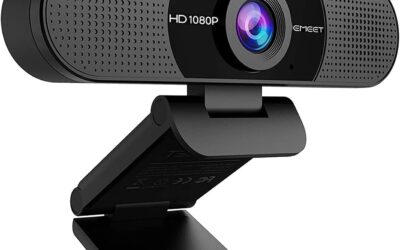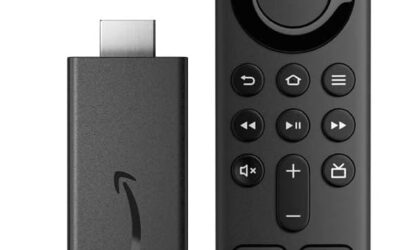Choosing the right printer for your home or office can be a daunting task with the wide array of options available today. If you need a printer for occasional personal use, high-volume office printing, or specialized tasks like photo printing, it’s important for you to know that you need a printer. Factors such as print quality, speed, cost of ownership, and connectivity options all play significant roles in determining which printer will best suit your needs. This guide aims to simplify the decision-making process by exploring key considerations and features to look for when selecting the best printer for your unique printing needs.
Understanding Your Printing Requirements
Inkjet vs. Laser Printers: Choosing the Right Technology
When deciding between inkjet and laser printers, it’s important to consider their distinct advantages and suitability for different printing needs:
- Print Quality: Inkjet printers are renowned for producing high-quality images and vibrant colors, making them ideal for photos and graphics. Laser printers excel in producing sharp text and are better suited for text-heavy documents.
- Speed: Laser printers are generally faster than inkjet printers, especially when printing large volumes of text documents. Inkjet printers are slower but offer better color printing capabilities.
- Cost per Page: Laser printers typically have a lower cost per page, especially for black and white prints, making them more cost-effective for high-volume printing. Inkjet printers can be more expensive to operate, particularly when printing color pages.
- Initial Cost: Inkjet printers are usually more affordable upfront compared to laser printers, which tend to have higher initial costs, especially for color laser printers.
- Usage and Maintenance: Inkjet printers require regular use to prevent ink from drying out and may require more frequent maintenance, such as printhead cleaning. Laser printers have toner cartridges that don’t dry out, making them suitable for occasional printing.
Choosing between inkjet and laser printers depends on your specific printing needs, budget, and long-term usage. Assessing these factors will help you determine which technology aligns best with your requirements for quality, speed, and cost-effectiveness.
All-in-One vs. Single-Function Printers: Deciding on Functionality
When choosing between an all-in-one printer and a single-function printer, consider the following factors to determine the right functionality for your needs:
- Functions Offered: All-in-one printers (also known as multifunction printers) combine printing, scanning, copying, and often faxing capabilities in a single device. Single-function printers, on the other hand, specialize only in printing.
- Space and Convenience: All-in-one printers save space by consolidating multiple functions into one device, making them suitable for home offices or small spaces where desk space is limited.
- Cost Efficiency: All-in-one printers can be more cost-effective than purchasing separate devices for printing, scanning, and copying. They also simplify maintenance and consumables management.
- Usage Requirements: Evaluate whether you need scanning, copying, and faxing capabilities alongside printing. For basic printing needs without additional functions, a single-function printer may suffice and could be more budget-friendly.
- Workflow Efficiency: All-in-one printers streamline workflow by offering multiple functionalities within reach, reducing the need to move between different devices for various tasks.
Choosing between an all-in-one and a single-function printer depends on your specific requirements for functionality, space availability, and budget considerations. Assessing these factors will help you make an informed decision that best suits your printing and office needs.
Print Quality and Resolution: Evaluating Your Needs
When evaluating print quality and resolution for your printer, consider these key factors:
- Resolution: Higher resolution (measured in dots per inch or dpi) results in sharper and more detailed prints. For text documents, 600 dpi is generally sufficient, while photos and graphics benefit from resolutions of 1200 dpi or higher.
- Color Accuracy: If you frequently print photos or color documents, ensure the printer’s color accuracy meets your standards. Look for printers with multiple ink cartridges or toner colors for better color reproduction.
- Print Technology: Different print technologies (such as inkjet, laser, and thermal) produce varying levels of print quality. Inkjet printers are preferred for vibrant color prints and photo printing, while laser printers excel in producing sharp text and monochrome graphics.
- Media Compatibility: Consider the types and weights of media the printer supports, such as plain paper, photo paper, envelopes, and cardstock. Printers with multiple paper trays or manual feed options offer flexibility for different media types.
- Speed vs. Quality: Balance your need for print speed with print quality. Higher-quality prints often require more time, especially for color documents or high-resolution photos.
- User Reviews and Samples: Research user reviews and request print samples to assess real-world print quality before making a purchase decision. Pay attention to details such as color vibrancy, text clarity, and image sharpness.
Understanding these aspects of print quality and resolution will help you choose a printer that meets your expectations for both everyday documents and specialized printing tasks like photos and graphics.
Considerations for Paper Handling and Media Support
When selecting a printer, it’s essential to consider its paper handling capabilities and support for different types of media:
- Paper Size and Capacity: Determine the maximum paper size the printer can handle, such as letter, legal, or tabloid (11×17 inches). Also, assess the paper tray capacity to ensure it meets your printing volume needs without frequent refills.
- Duplex Printing: Check if the printer supports automatic duplex (double-sided) printing. This feature can save paper and is convenient for printing documents such as reports and presentations.
- Media Types: Evaluate the printer’s compatibility with various media types, including plain paper, photo paper, envelopes, labels, cardstock, and transparencies. Printers with multiple paper trays or manual feed options offer flexibility for different media sizes and weights.
- Special Media Handling: If you frequently print on specialty media (like glossy or matte photo paper), ensure the printer’s specifications include support for these media types without compromising print quality.
- ADF (Automatic Document Feeder): For multifunction printers, especially those used for scanning and copying, check if it includes an ADF for automatically feeding multiple pages. This feature enhances productivity, particularly for multi-page documents.
- Output Tray and Handling: Consider the design of the printer’s output tray to ensure it can accommodate the printed documents without causing jams or disarray.
- Borderless Printing: Determine if the printer supports borderless printing, which is essential for producing edge-to-edge prints, especially for photos and marketing materials.
Connectivity Options: Wireless vs. Wired Printers
When choosing a printer, consider the connectivity options available and which best suits your needs:
- Wireless Connectivity: Wireless printers connect to your computer or network via Wi-Fi, allowing for flexible placement within your home or office. They support printing from multiple devices, including laptops, smartphones, and tablets, without the need for physical connections. This convenience is ideal for shared environments or spaces where wired connections are impractical.
- Wired Connectivity: Wired printers connect directly to your computer or network using Ethernet cables. They offer reliable and stable connections, making them suitable for offices or environments where consistent performance is critical. Wired printers are typically faster for large print jobs and may be preferred for network security reasons.
- USB Connectivity: Some printers offer USB connectivity for direct connection to a single computer. This option is straightforward and doesn’t require network setup but limits printing capabilities to a single device.
- Mobile Printing: Check if the printer supports mobile printing technologies such as Apple AirPrint, Google Cloud Print, or printing apps provided by the printer manufacturer. These options enable printing directly from smartphones and tablets, enhancing flexibility and convenience.
- Network Printing: Assess whether the printer can be easily integrated into your existing network infrastructure, such as home or office networks. This capability allows multiple users to access the printer from different devices connected to the same network.
- Setup and Installation: Consider the ease of setup and installation for your chosen connectivity option. Wireless printers may require initial network configuration, while wired printers often involve straightforward plug-and-play setup.
Cost of Ownership: Budgeting for Ink and Toner
When selecting a printer, it’s crucial to consider the ongoing costs associated with ink and toner cartridges:
- Cost per Page: Calculate the cost per page for both black and white and color printing. This includes dividing the price of replacement cartridges by their page yield. Higher-yield cartridges may initially cost more but can be more cost-effective in the long run.
- Print Volume: Estimate your monthly print volume to assess how frequently you’ll need to replace cartridges. High-volume printing may require printers with lower cost per page and higher-yield cartridges to minimize ongoing expenses.
- Third-Party Cartridges: Evaluate whether the printer supports third-party or compatible cartridges, which may offer cost savings compared to original manufacturer cartridges. However, consider potential impacts on print quality and warranty coverage.
- Ink Subscription Services: Some printer manufacturers offer ink subscription services that provide cartridges at a fixed monthly cost based on your estimated usage. These services can simplify budgeting and may offer cost savings for regular users.
- Energy Efficiency: Consider the printer’s energy consumption and look for ENERGY STAR certification, which indicates energy-efficient operation. Lower energy usage can contribute to reduced operating costs over time.
- Maintenance Costs: Factor in maintenance costs such as printhead cleaning, paper jams, and other routine printer maintenance. Assess whether these costs are covered under warranty or require additional expenses.
Printer Size and Footprint: Space Considerations
When selecting a printer, consider its physical size and footprint to ensure it fits seamlessly into your workspace:
- Dimensions: Check the printer’s dimensions, including width, depth, and height, to determine if it fits on your desk or in the designated space.
- Compact vs. Full-Size: Choose between compact printers, which are smaller and ideal for tight spaces or home offices, and full-size printers, which may offer additional features and larger paper capacities but require more room.
- Placement Flexibility: Assess whether the printer’s design allows for flexible placement options, such as near a wall or in a corner, without obstructing pathways or access to other equipment.
- Paper Trays and Output Trays: Consider the location and accessibility of paper trays and output trays to ensure they accommodate paper handling needs without extending the printer’s footprint unnecessarily.
- Multifunction Printers: For all-in-one printers, evaluate the combined footprint considering additional functions such as scanning, copying, and faxing. Ensure the printer’s overall size meets your space requirements while providing the desired functionality.
- Portability: If mobility is a concern, look for portable or lightweight printers that can be easily moved between locations or stored when not in use.
Energy Efficiency and Environmental Impact
When choosing a printer, consider its energy efficiency and environmental impact:
- ENERGY STAR Certification: Look for printers with ENERGY STAR certification, which indicates they meet strict energy efficiency guidelines set by the Environmental Protection Agency (EPA). ENERGY STAR-certified printers consume less energy during operation and standby modes, reducing electricity costs and environmental impact.
- Power Saving Features: Evaluate the printer’s power-saving features, such as automatic sleep mode and power-off timers. These features help conserve energy when the printer is not in use, contributing to lower energy consumption over time.
- Eco-Friendly Printing Options: Some printers offer eco-friendly printing options, such as duplex (double-sided) printing and toner-saving modes. These features reduce paper and toner usage, minimizing waste and environmental footprint.
- Recycling Programs: Check if the printer manufacturer provides recycling programs for used cartridges and other consumables. Participating in these programs promotes responsible disposal and recycling of printer materials, reducing landfill waste.
- Longevity and Durability: Choose printers known for durability and long lifespan, reducing the frequency of replacements and e-waste generation.
- Environmental Certifications: Look for printers certified by environmental organizations or industry standards for their eco-friendly design and manufacturing practices.
Reading Reviews and Comparing Models
Before purchasing a printer, it’s essential to conduct thorough research by reading reviews and comparing different models:
- Expert Reviews: Consult reputable technology websites, consumer reports, and industry publications for expert reviews. These reviews often provide detailed insights into a printer’s performance, print quality, ease of use, and reliability.
- User Reviews: Read user reviews on retailer websites, forums, and social media platforms to gather firsthand experiences from other consumers. Pay attention to common praises and complaints regarding print quality, reliability, customer support, and overall satisfaction.
- Comparison Tools: Use comparison tools available on retailer websites and manufacturer’s sites to compare specifications, features, and pricing of multiple printer models side by side. This helps identify which printers meet your specific requirements and budget constraints.
- Consider Long-Term Costs: Beyond initial purchase price, consider long-term costs such as ink or toner replacement, maintenance, and warranty coverage. Reviews often provide insights into these aspects and help you make an informed financial decision.
- Compatibility and Integration: Check compatibility with your existing devices and operating systems, as well as integration with software applications you commonly use. Reviews may highlight compatibility issues or seamless integration capabilities.
- Customer Support: Evaluate reviews related to customer support experiences, including responsiveness, helpfulness, and ease of resolving issues. Reliable customer support can significantly impact your satisfaction with the printer over time.
Suitable Printers for Home and Offices
Choosing the right printer for your home or office depends on your specific needs and preferences. Here are some versatile options to consider:
- HP OfficeJet Pro 9015: An all-in-one inkjet printer suitable for small offices, offering fast printing speeds, automatic duplexing, and robust connectivity options.
- Canon PIXMA TS8320: Ideal for home use, this inkjet printer delivers excellent photo quality prints, supports various media types, and features wireless connectivity for convenient printing from smartphones and tablets.
- Brother HL-L2350DW: A compact monochrome laser printer perfect for home offices, offering fast printing speeds, automatic duplexing, and wireless connectivity. It’s cost-effective with high-yield toner options.
- Epson EcoTank ET-2720: This inkjet printer is ideal for both home and office environments, featuring refillable ink tanks that reduce the cost per page significantly. It offers wireless printing and includes enough ink to last for thousands of pages.
- Canon imageCLASS MF445dw: A versatile all-in-one laser printer suitable for small to medium-sized offices, featuring duplex printing, scanning, copying, and faxing capabilities. It supports mobile printing and has a customizable color touchscreen.
- HP LaserJet Pro M404dw: A compact and efficient monochrome laser printer designed for office environments, offering fast printing speeds, automatic duplexing, and robust security features. It supports wireless and Ethernet connectivity.
- Brother MFC-J995DW: An all-in-one inkjet printer with a high-capacity ink system, making it cost-effective for both home and office use. It includes features like automatic duplexing, mobile printing, and a touchscreen display.
- Xerox Phaser 6510/DNI: A color laser printer suitable for offices needing vibrant color prints, fast printing speeds, and network connectivity options. It offers automatic duplexing and supports various media sizes.
These printers are selected based on their performance, features, cost-effectiveness, and suitability for different printing needs in home and office environments. Depending on your specific requirements for print quality, speed, connectivity, and budget, one of these options may be the ideal choice for enhancing productivity and meeting your printing demands.
Conclusion
In conclusion, selecting the right printer for your home or office involves assessing various factors such as printing needs, budget, space constraints, and desired features. Whether you prioritize cost-effective printing with ink tank systems, high-speed monochrome laser printing for office documents, or vibrant color output for creative projects, there’s a printer tailored to meet your requirements. By evaluating reviews, comparing models, and considering long-term costs like ink or toner replacement, you can make an informed decision that enhances productivity and efficiency in your printing tasks. Remember to choose a printer that not only meets your current needs but also aligns with your future printing demands and environmental considerations, ensuring a satisfactory printing experience for years to come.










